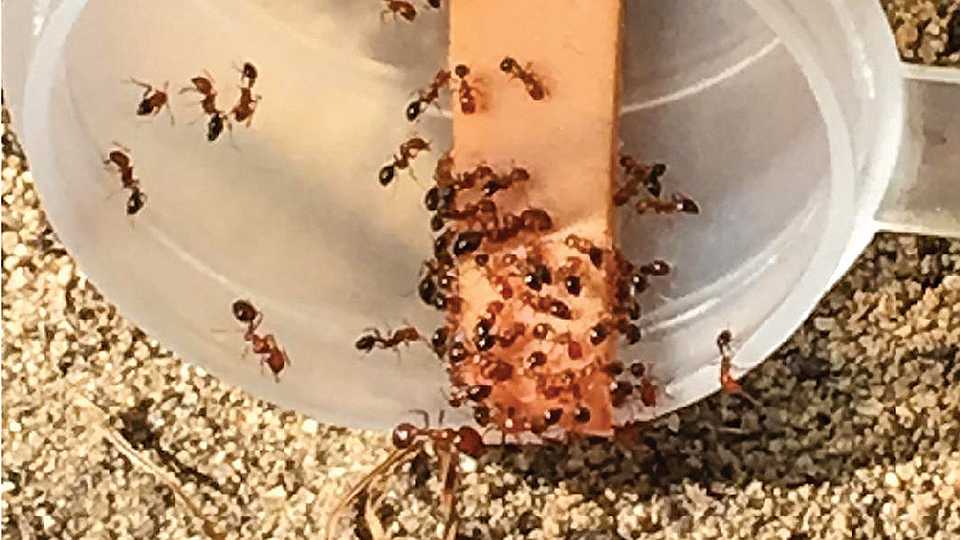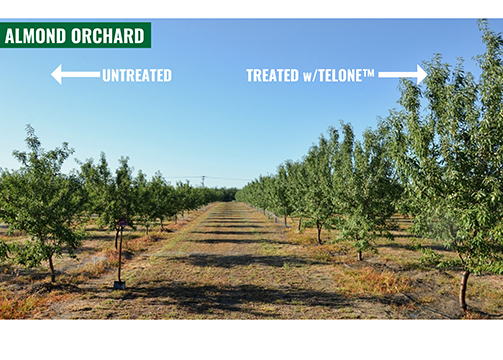Methods to Manage Ants in Early Nut Harvest

Surveying your orchard in April or May can help you determine the size of the ant populations in your orchard. Ant baits should be applied before harvest.
Photo by Wes Akai
In an effort to skirt some of the concerns with navel orangeworm (NOW) damage or hull rot limb dieback, many growers will practice prompt or early harvesting. This entails shaking nuts when hull split is complete but hulls are still slightly green. By getting the nuts off the trees at this stage, they are less vulnerable to NOW egg laying.
Detachment of these nuts also reduces limb dieback from nuts with hull rot (Rhizopus, Monilinia, and Aspergillus), as these nuts no longer have a vascular connection to the tree to conduct the fumaric acid toxins that the fungi produces in the limbs.
Ant Management
While all of this is great from the harvest management perspective, it does introduce another variable that needs to be noted and/or managed — the presence of high ant populations. The less mature the nuts are when harvested, the longer the drying time required before pickup. Also, if rain occurs during harvest, this will further delay harvesting.
The mere presence of ants is not necessarily bad, since there are several species, including the gray field ant, harvester ant, and pyramid ant, which will produce many active colonies but not damage your crop.
If the southern fire ant is present or if you are unfortunate to have the imported fire ant present in the orchard, these colonies need to be eliminated or managed to levels that will minimize crop loss. This may take a one- or two-pronged approach to achieve satisfactory results.
If populations are low, a single treatment with an insect growth regulator type of bait — there are three different materials and modes of action — in early summer (four to eight weeks prior to harvest) may be sufficient. If populations are high, a second treatment may be necessary and can be rotated with a toxicant type of bait that has a short (five-day) preharvest interval (PHI). It is quicker-acting but has a shorter residual so needs to be applied as close to the PHI as possible.
To determine if treatments are needed, or to predict the potential damage level, there is a worksheet on the University of California IPM Almond website that you can use for monitoring populations.
Prompt or early harvesting is beneficial for a number of reasons. Reducing NOW risk is the primary benefit, but for some growers, and especially with the ‘Nonpareil’ variety, reducing hull rot limb dieback can be equally important. Those with ‘Monterey’ or ‘Fritz’ also can benefit from ant management since it is not uncommon for those late-harvesting varieties to get rained on and spend additional time on the orchard floor.










